A New 3D Printing System of Poly(3,4-ethylenedioxythiophene) for Realizing a High Electrical Conductivity and Fine Processing Resolution
Abstract
:1. Introduction
2. Materials and Methods
2.1. Materials
2.2. Photo-Fabrication
2.3. Evaluation of the Electrical Conductivity
3. Results and Discussion
3.1. Processing Resolution
3.2. Electrical Conductivity
4. Conclusions
Author Contributions
Funding
Conflicts of Interest
Abbreviations
| UV | ultraviolet |
| EDOT | 3,4-ethylendioxythiophene |
| PEDOT | Poly(3,4-ethylendioxythiophene) |
| STED | stimulated emission depletion |
| TBABF4 | tetrabutylammonium tetrafluoroborate |
| Bis-EDOT | dimer of 3,4-ethylendioxythiophene |
| MV2+ | methylviologen |
| Ru(bpy)32+ | tris(2,2′-bipyridyl)ruthenium complex |
References
- Maruo, S.; Nakamura, O.; Kawata, S. Three-dimensional microfabrication with two-photon-absorbed photopolymerization. Opt. Lett. 1997, 22, 132. [Google Scholar] [CrossRef] [PubMed] [Green Version]
- Deubel, M.; Von Freymann, G.; Wegener, M.; Pereira, S.; Busch, K.; Soukoulis, C.M. Direct laser writing of three-dimensional photonic-crystal templates for telecommunications. Nat. Mater. 2004, 3, 444. [Google Scholar] [CrossRef] [PubMed]
- Gansel, J.K.; Thiel, M.; Rill, M.S.; Decker, M.; Bade, K.; Saile, V.; Von Freymann, G.; Linden, S.; Wegener, M. Gold helix photonic metamaterial as broadband circular polarizer. Science 2009, 325, 1513. [Google Scholar] [CrossRef]
- Fischer, J.; Wegener, M. Three-dimensional direct laser writing inspired by stimulated-emission-depletion microscopy. Opt. Mater. Express 2011, 1, 614. [Google Scholar] [CrossRef]
- Blasco, E.; Müller, J.; Müller, P.; Trouillet, V.; Schön, M.; Scherer, T.; Barner-Kowollik, C.; Wegener, M. Fabrication of conductive 3D gold-containing microstructures via direct laser writing. Adv. Mater. 2016, 28, 3592. [Google Scholar] [CrossRef]
- Yamada, K.; Kimura, Y.; Suzuki, S.; Sone, J.; Chen, J.; Urabe, S. Multiphoton-sensitized polymerization of pyrrole. Chem. Lett. 2006, 35, 908. [Google Scholar] [CrossRef]
- Yamada, K.; Kyoya, A.; Sone, J.; Chen, J. Evaluations of vertical resolution of conductive polymer three-dimensional microstructures photofabricated in transparent polymer sheet. Opt. Rev. 2011, 18, 162. [Google Scholar] [CrossRef]
- Yamada, K.; Watanabe, M.; Sone, J. Three-dimensional printing of conducting polymer microstructures into transparent polymer sheet: Relationship between process resolution and illumination conditions. Opt. Rev. 2014, 21, 679. [Google Scholar] [CrossRef]
- Sone, J.; Yamada, K.; Asami, A.; Chen, J. Sub-micrometer size structure fabrication using a conductive polymer. Micromachines 2015, 6, 96. [Google Scholar] [CrossRef] [Green Version]
- Matsui, T.; Vardeny, Z. Valy Resonantly-enhanced transmission through a periodic array of subwavelength apertures in heavily-doped conducting polymer films. Appl. Phys. Lett. 2006, 88, 071101. [Google Scholar] [CrossRef]
- Yamada, K.; Magori, Y.; Akimoto, S.; Sone, J. Micro-nano 3D printing of electronically conductive polymers as a new process for achieving higher electronic conductivities. Microsyst. Technol. 2019, 25, 2051. [Google Scholar] [CrossRef]
- Na, S.-I.; Kim, S.-S.; Jo, J.; Kim, D.-Y. Efficient and flexible ITO-free organic solar cells using highly conductive polymer anodes. Adv. Mater. 2008, 20, 4061. [Google Scholar] [CrossRef]
- Kim, W.H.; Mäkinen, A.J.; Nikolov, N.; Shashidhar, R.; Kim, H.; Kafafi, Z.H. Molecular organic light-emitting diodes using highly conducting polymers as anodes. Appl. Phys. Lett. 2002, 80, 3844. [Google Scholar] [CrossRef]
- Argun, A.A.; Cirpan, A.; Reynolds, J.R. The first truly all-polymer electrochromic devices. Adv. Mater. 2003, 15, 1338. [Google Scholar] [CrossRef]
- Yamada, K.; Yamada, Y.; Sone, J. Three-dimensional photochemical microfabrication of poly(3,4-ethylenedioxythiophene) in transparent polymer sheet. Thin Solid Film. 2014, 554, 102. [Google Scholar] [CrossRef]
- Cho, B.; Park, K.S.; Baek, J.; Oh, H.S.; Koo Lee, Y.-E.; Sung, M.M. Single-crystal poly(3,4-ethylenedioxythiophene) nanowires with ultrahigh conductivity. Nano Lett. 2014, 14, 3321. [Google Scholar] [CrossRef]
- Kurselis, K.; Kiyan, R.; Bagratashvili, V.N.; Popov, V.K.; Chichkov, B.N. 3D fabrication of all-polymer conductive microstructures by two photon polymerization. Opt. Express 2013, 21, 31029. [Google Scholar] [CrossRef]
- Cullen, A.T.; Price, A.D. Digital light processing for the fabrication of 3D intrinsically conductive polymer structures. Synth. Met. 2018, 235, 34. [Google Scholar] [CrossRef]
- Hyunwoo, Y.; Baoyang, L.; Shen, L.; Kai, Q.; Jingkun, X.; Jianhong, L.; Xuanhe, Z. 3D printing of conducting polymers. Nat. Commun. 2020, 11, 1604. [Google Scholar]
- Martin, C.R. Template synthesis of electronically conductive polymer nanostructures. Acc. Chem. Res. 1995, 28, 61. [Google Scholar] [CrossRef]
- Stapelfeldt, H.; Seideman, T. Colloquium: Aligning molecules with strong laser pulses. Rev. Mod. Phys. 2003, 75, 543. [Google Scholar] [CrossRef] [Green Version]


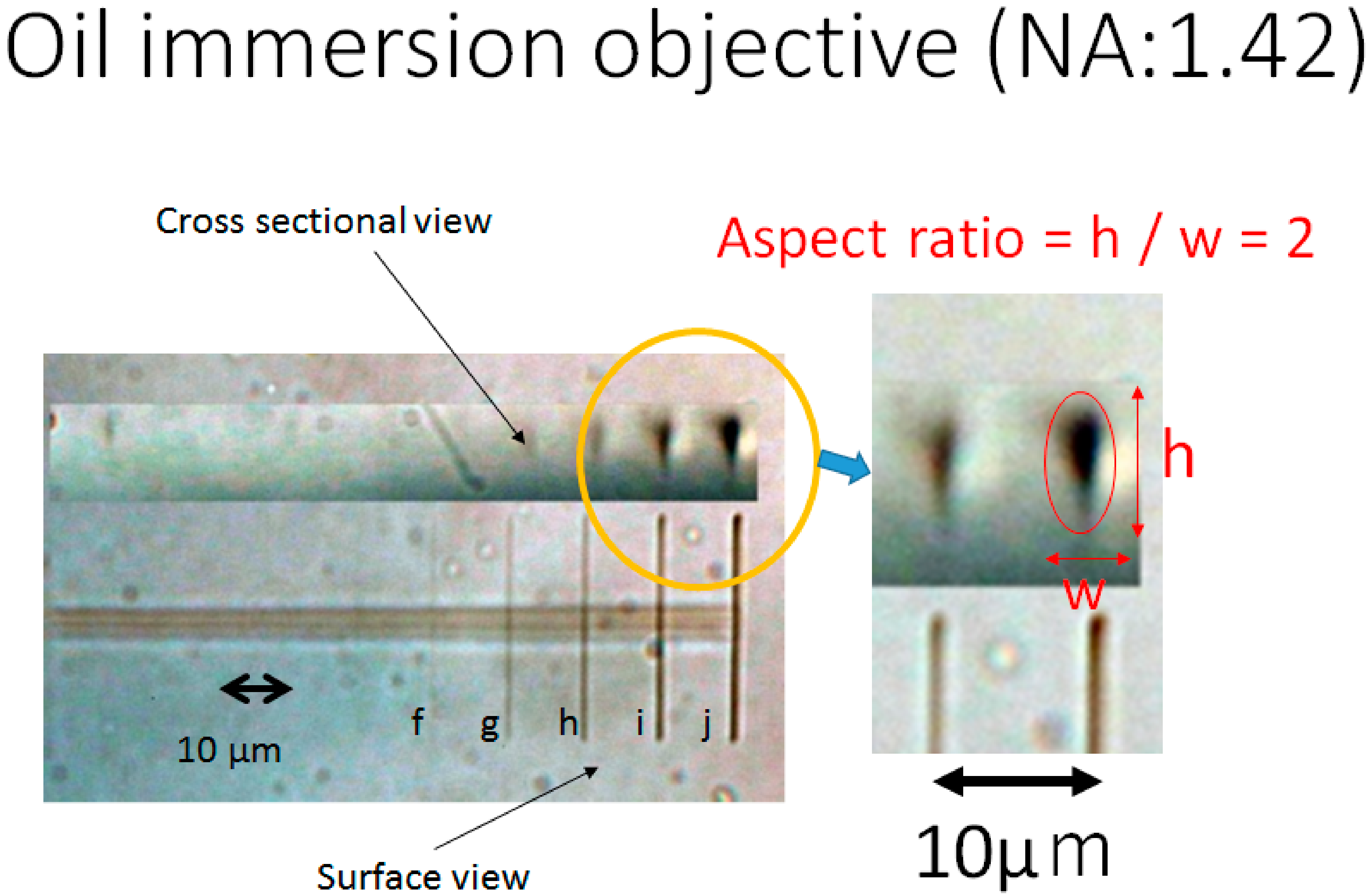
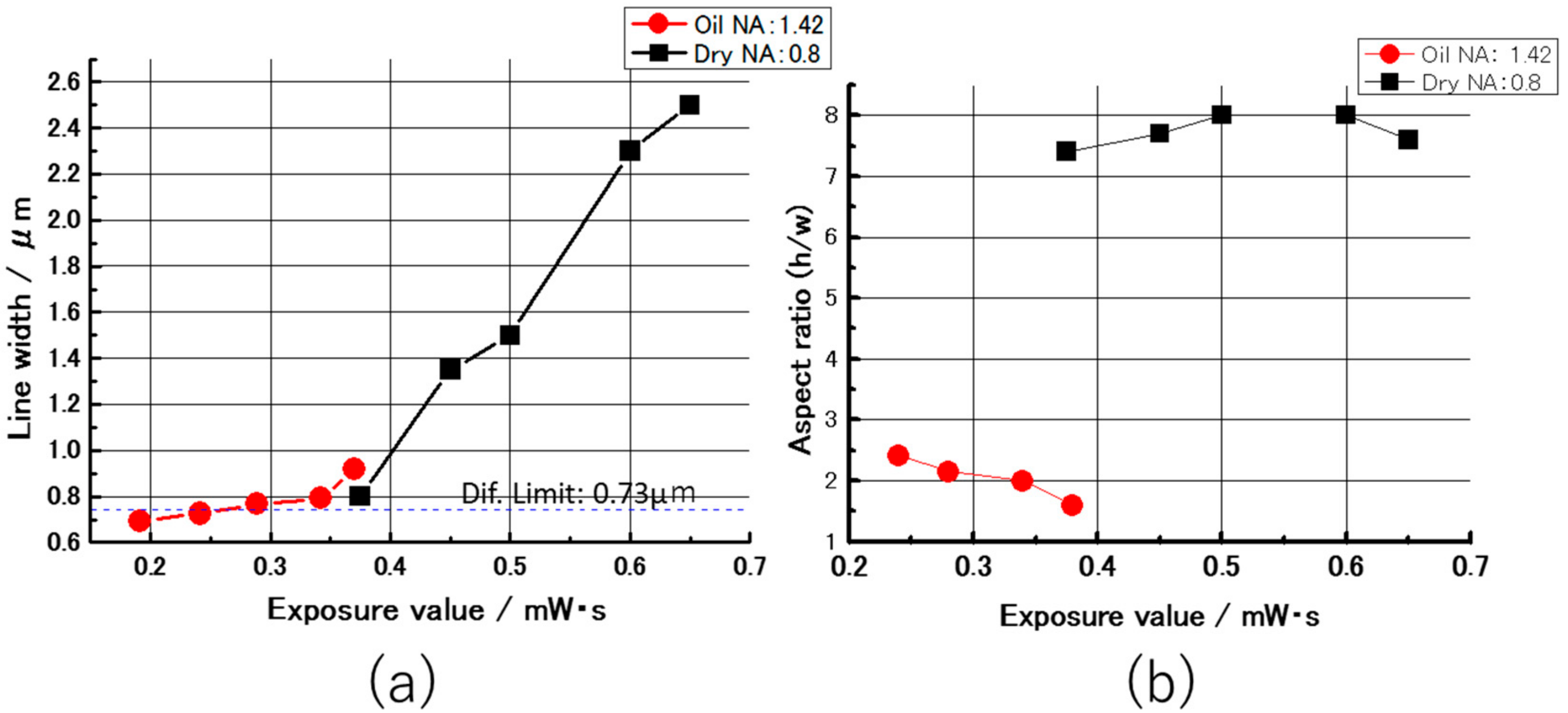
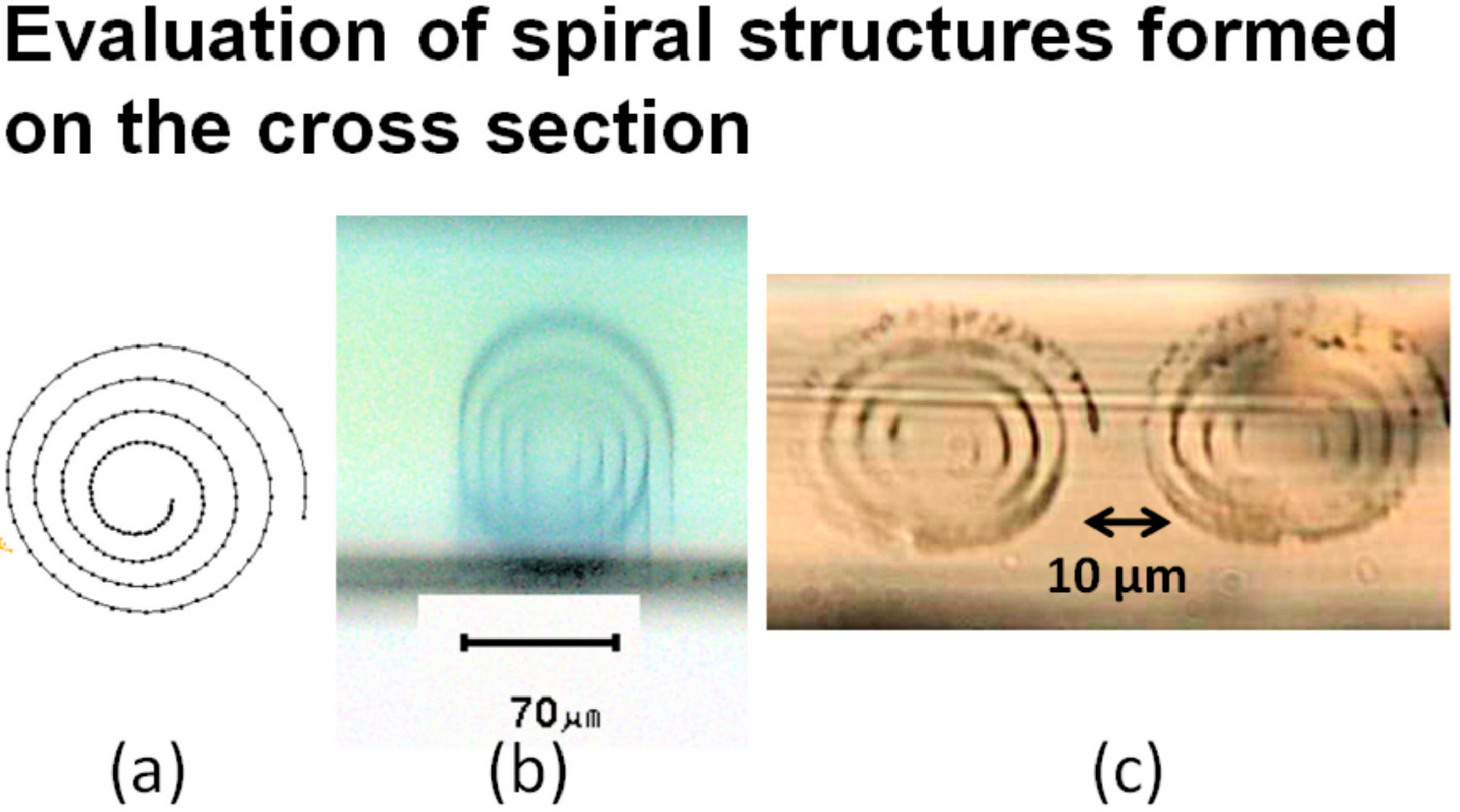
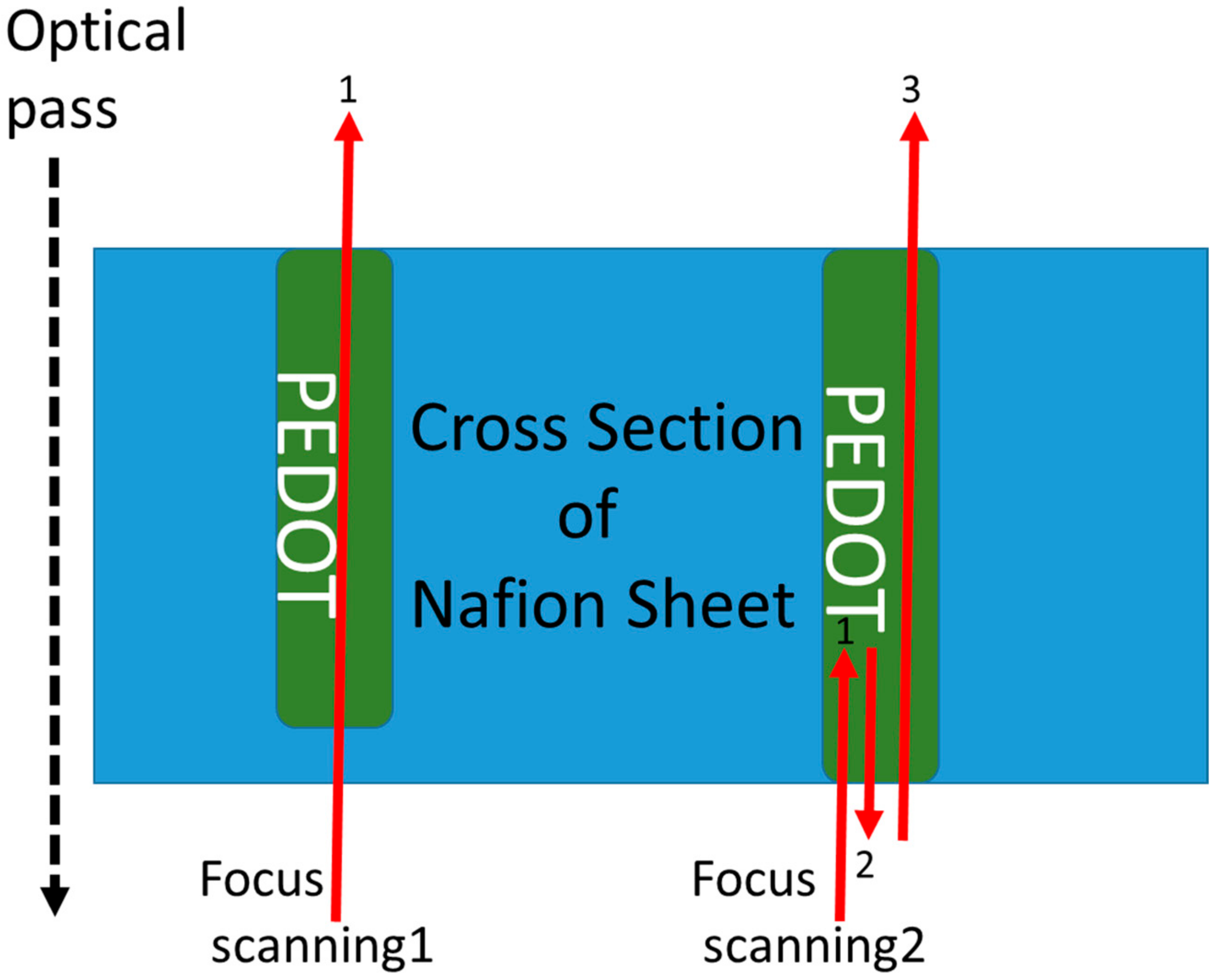

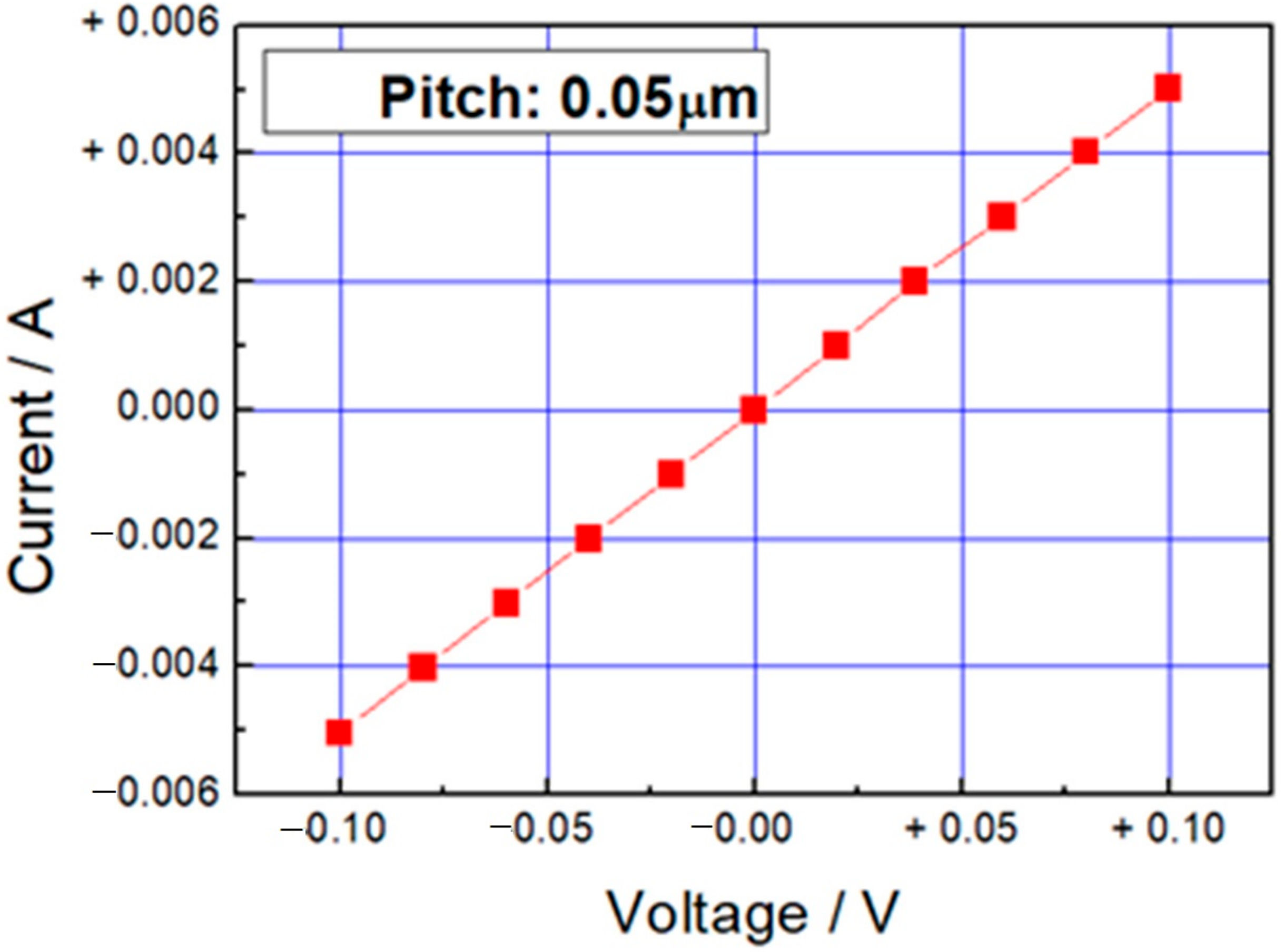
Publisher’s Note: MDPI stays neutral with regard to jurisdictional claims in published maps and institutional affiliations. |
© 2020 by the authors. Licensee MDPI, Basel, Switzerland. This article is an open access article distributed under the terms and conditions of the Creative Commons Attribution (CC BY) license (http://creativecommons.org/licenses/by/4.0/).
Share and Cite
Yamada, K.; Sone, J. A New 3D Printing System of Poly(3,4-ethylenedioxythiophene) for Realizing a High Electrical Conductivity and Fine Processing Resolution. Micromachines 2020, 11, 1120. https://doi.org/10.3390/mi11121120
Yamada K, Sone J. A New 3D Printing System of Poly(3,4-ethylenedioxythiophene) for Realizing a High Electrical Conductivity and Fine Processing Resolution. Micromachines. 2020; 11(12):1120. https://doi.org/10.3390/mi11121120
Chicago/Turabian StyleYamada, Katsumi, and Junji Sone. 2020. "A New 3D Printing System of Poly(3,4-ethylenedioxythiophene) for Realizing a High Electrical Conductivity and Fine Processing Resolution" Micromachines 11, no. 12: 1120. https://doi.org/10.3390/mi11121120
APA StyleYamada, K., & Sone, J. (2020). A New 3D Printing System of Poly(3,4-ethylenedioxythiophene) for Realizing a High Electrical Conductivity and Fine Processing Resolution. Micromachines, 11(12), 1120. https://doi.org/10.3390/mi11121120




